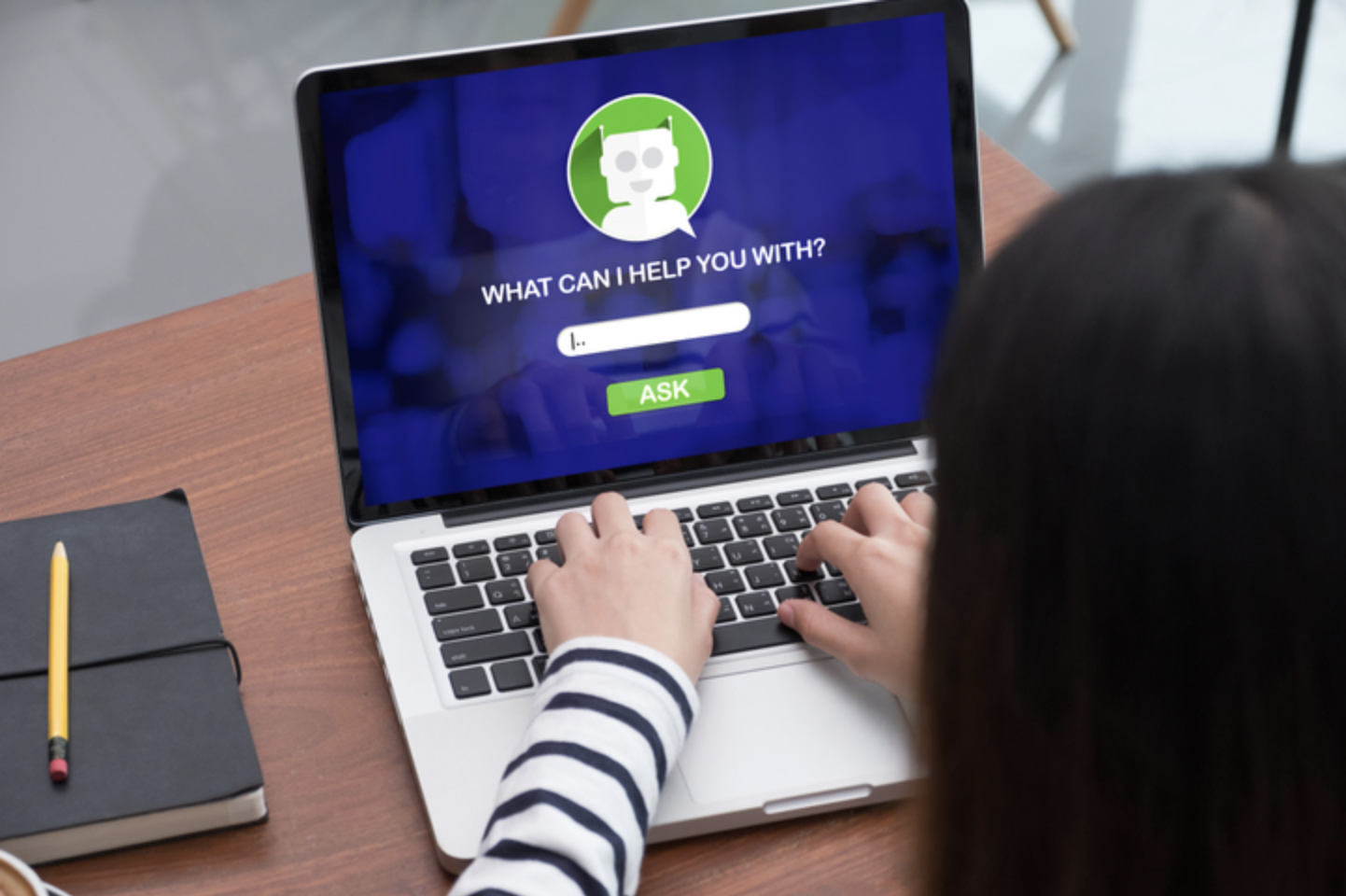Customer Service Calls Overwhelming?Chatbots Could Help.
Chatbots: Those automated computer systems that try to answer your questions BEFORE transferring you to a customer service agent. Almost everyone has had an infuriating experience with one, but when they work well, it can be a seamless and satisfying customer experience. According to a 2020 survey of customers 18 to 64, 72% of consumers expect 24/7 access to customer service help. For small businesses, it may financially burdensome to meet that demand with live-customer support but chatbots could help — if done right. Let’s explore the different types of chatbots and the best practices for using them so you don’t annoy your customers.
What Is A Chatbot?
On the surface, a chatbot is a computer program designed to simulate human conversation either verbally or written. But there isn’t just one type of chatbot. Let’s take a look at just three types of chatbots businesses use.
Scripted Chatbots
Scripted chatbots are basically knowledge databases that customers can access by asking a question such as “How do I return my shoes?” The chatbot will respond with “Are you trying to return an item?” In this scenario, the chatbot recognizes the word ‘return’ so it will generate a programmed response. If the customer clicks ‘yes,’ the chatbot will generate a programmed response that hopefully answers the question. This is probably one of the simplest types of chatbots businesses use.
This an example of a scripted chatbot.
Natural Language Processing (NLP) Chatbots
NLP chatbots listen to or read text the customer inputs, then interprets what they mean. When you call your bank and a computer program asks you to press or say 1 for English or press or say 2 for Spanish, this is an example of an NLP chatbot. It recognizes the sound for 1 and 2 and has been programmed to connect you to specific departments based on what you say. But if you say “I want a customer service agent,” it will also recognize that and connect you to a live customer service agent.
This is an example of an NLP chatbot.
Service Chatbots
A service chatbot is a program that helps you complete an action. For example, it might guide you through ordering a pizza, booking a flight or checking the shipping status of an item you purchased. These types of chatbots make it possible for Amazon customers to return an item without ever speaking to a live customer service agent.
This is an example of a service chatbot.
Chatbots’ Impact On Customer Experience
According to Drift’s 2020 State of Conversational Marketing report, 24.9% of customers used chatbots to communicate with businesses and 87.2% of customers reported having a positive or neutral experience. When done well, chatbots can quickly deliver accurate answers to the most commonly asked questions, speed up customer support response times, and provide personalized service. However, there are some chatbot fails that can harm the customer experience.
No exit from the chatbot conversation.
Some people just don’t want to talk to chatbots. Or, they know that their question can’t be answered by a chatbot. You should make it easy for customers to exit the chatbot conversation at any time. The most well-designed systems allow the customer to connect to a live agent if the customer just says something like “customer service please.”
Basic questions don’t get answered.
A well-designed chatbot should answer basic questions (e.g., operating hours, location, how to return an item) quickly and easy. This means you will need to spend time researching which FAQs your chatbot should answer.
Chatbot loops.
Everyone has experienced asking a chatbot a question only to be told “I don’t understand that question,” then getting looped back to “How can I help you?” with no off-ramp to a live agent. Every chatbot system should have a way to exit the chat and reach a live-agent.
Complex chatbot systems designed poorly.
For a small business, implementing a chatbot system poorly can actually harm your brand’s reputation and drive away customers. When experimenting with chatbots for the first time, start small and invest in a well-designed system that solves your specific customer service problems.
Do You Really Need a Chatbot?
According to a report by Salesforce, 23% of customer service companies use a chatbot. For large businesses, such as Amazon or Wells Fargo, leveraging complex chatbots makes sense financially. They can handle more customer interactions while reserving their live customer service agents for more complex conversations. But for smaller companies, the decision to use a chatbot will depend on two questions: What problem are you trying to solve? and How big is that problem?
For example, if you’re a small business who receives a few customer service calls a week, using a complex chatbot system is probably not the best investment. On the other hand, if you are receiving hundreds of calls a week, then a simple chatbot system might help you speed up the time it takes customers to get answers. Here are a few suggestions:
1. Use scripted chatbots to answer FAQs quickly 24/7. There are chatbot integrations for social media, websites, and email. Start simple and use the chatbot as an enhancement not a replacement for customer service. For example, you might use a chatbot to tell a customer that you will get back to them in an hour or that they can visit your FAQ page. This is probably one of the simplest ways to use this type of chatbot.
2. Use service chatbots to help customers order your product/service or check on the status of a shipment or delivery. You can do this via a website but also via text, phone, and social media. Dominos uses chatbots effectively to help customers order pizza. Their chatbot even has a name and avatar.
3. Use NLP chatbots when you want customers to have more conversational interactions with your bot. This will allow customers to ask questions naturally and the bot will interpret what they’re saying. Warning: This type of system may require significant financial and time investments to do it correctly.
4. And finally, tell your customers that they are talking to a bot.
It’s predicted that the number of businesses using chatbots will continue to increase. However, if you want chatbots to help your business (not harm it) you will need to implement chatbot systems that add value to the customer experience.
Seattle Bankruptcy Attorneys
Do you have questions about and bankruptcy and business law? Contact the experienced Seattle bankruptcy attorneys at Wenokur Riordan PLLC today at (206) 724-0846 to discuss your situation.





